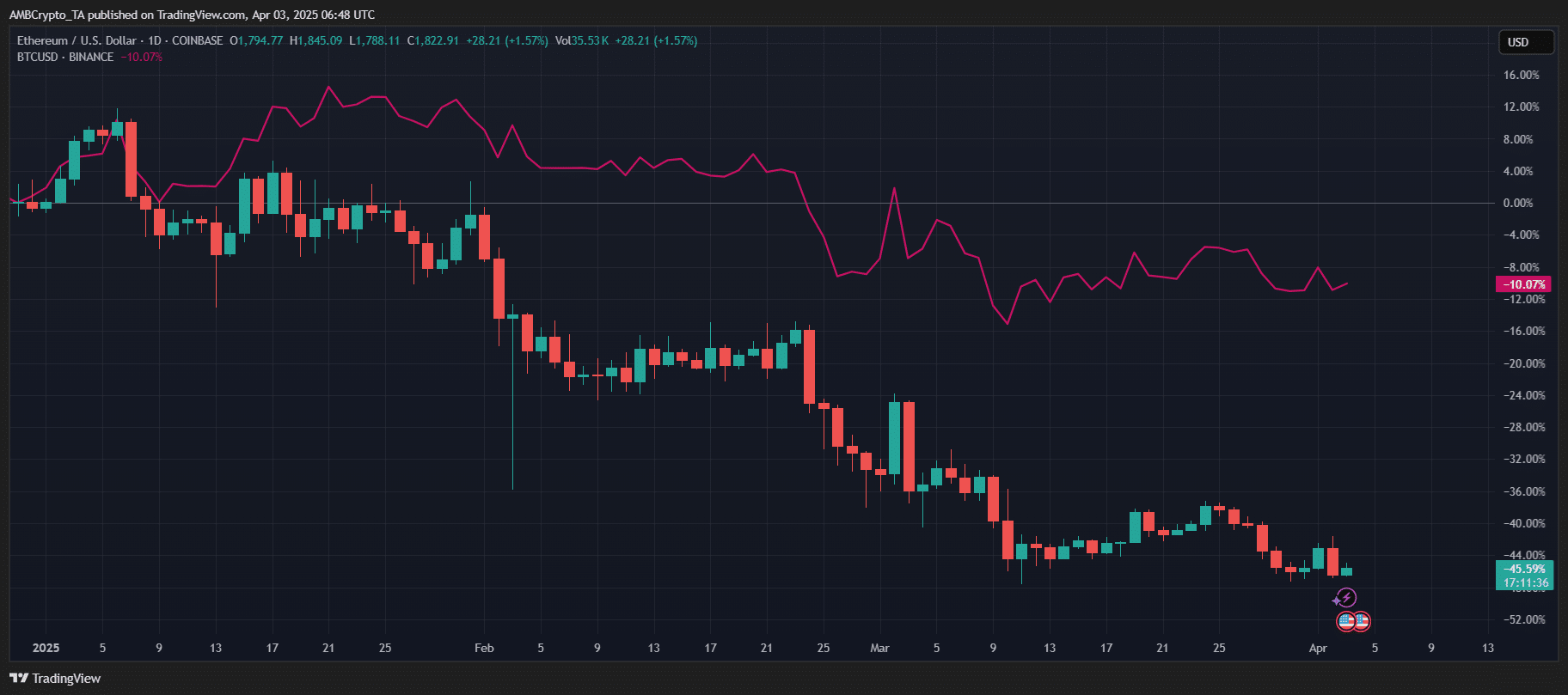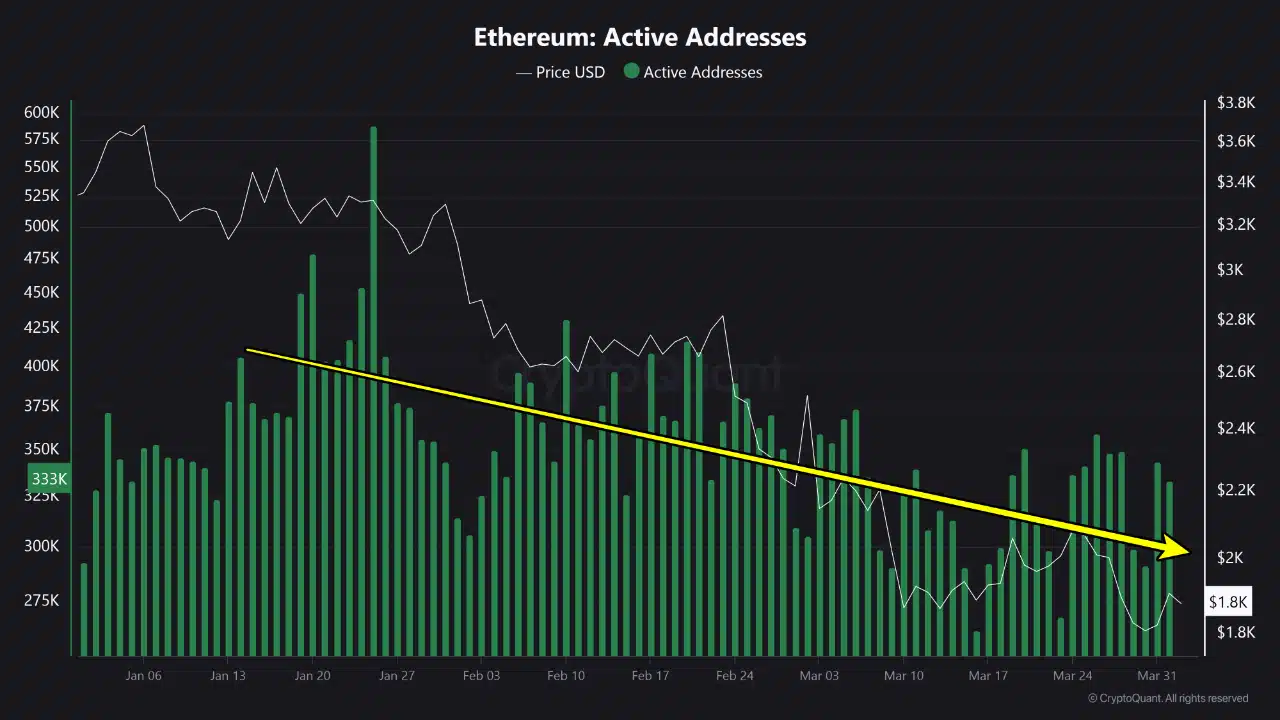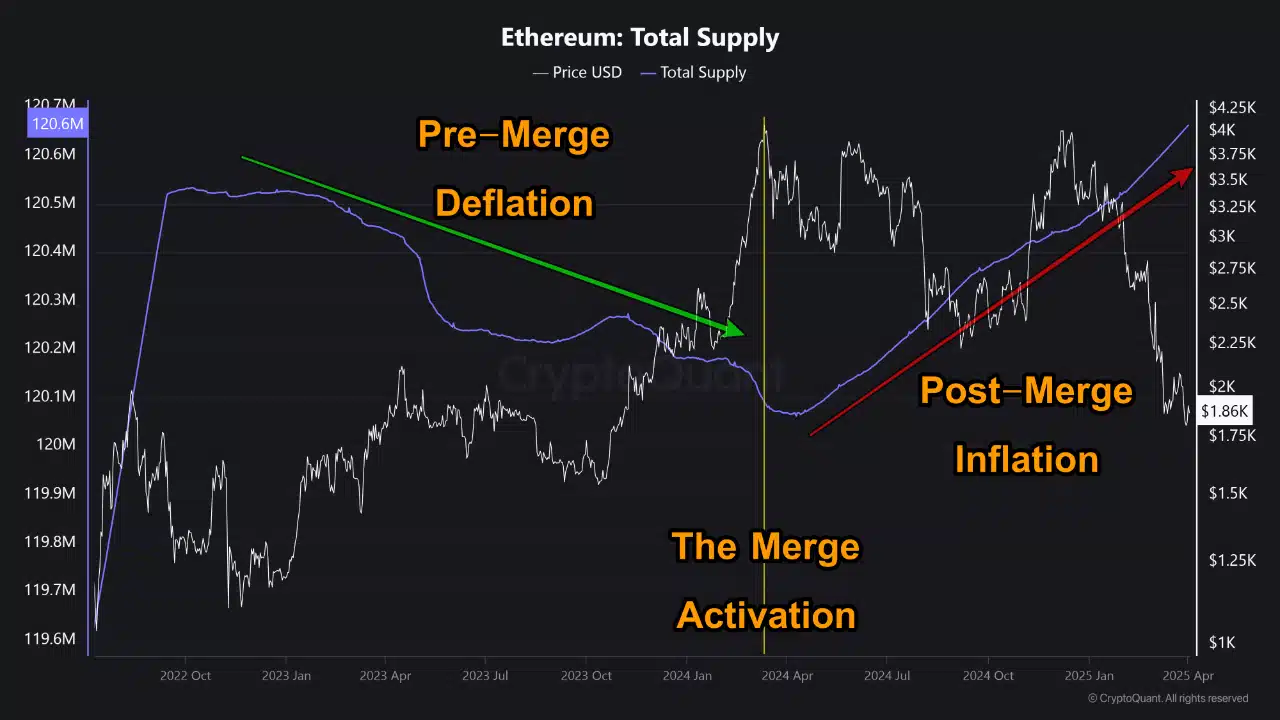-
Ethereum faces significant market pressure as its price plunges by 45%, raising concerns about its inflationary strategies and user engagement post-Dencun upgrade.
-
Economic analysts report that Ethereum’s recent struggles highlight critical infrastructural issues within its ecosystem, evidently diverging from Bitcoin during this downturn.
-
According to a recent report from COINOTAG, “The current inflation challenges for Ethereum may necessitate immediate strategic adjustments to restore user confidence.”
This analysis delves into Ethereum’s dramatic price drop, examining systemic issues and performance post-Dencun upgrade amidst declining user engagement.
Ethereum’s Troubling Price Behavior and Market Reaction
Ethereum’s alarming price drop to a five-year low is a troubling indicator of its current market position. With network activity on a decline, Ethereum’s market capitalization has significantly suffered, causing a ripple effect that has unsettled investor sentiments across the cryptocurrency landscape.
Data reveals that while Bitcoin has maintained relative stability, Ethereum’s almost 45% plunge in value reflects a stark loss of investor confidence. As it stands, Ethereum has become overshadowed not only by Bitcoin’s performance but also by emerging altcoins that have managed to hold their ground during this extended downturn.

Source: TradingView
The price discrepancy between the two leading cryptocurrencies points towards a unique path for Ethereum—one that may be hampered by internal challenges rather than external market conditions.
Active User Engagement Decreases, Highlighting Systemic Concerns
The decline in Ethereum’s active user base, which has fallen from about 525,000 to roughly 333,000 addresses, raises serious questions about user engagement. This decline signals a concerning trend, as reduced transactional activity directly correlates with lower price resilience.
The market reaction to Ethereum’s diminishing active users aligns with decreased transactional volumes, reinforcing the narrative of a concerning downtrend across Ethereum’s user base. Lower volumes of transactions further exacerbate challenges surrounding liquidity, as Ethereum struggles to maintain momentum amid persistent price declines.

Source: CryptoQuant
Evaluating Ethereum’s Forward Trajectory: Inflationary Mechanisms at Play
In the wake of Ethereum’s Dencun upgrade, a pivotal change in its inflationary mechanics has been observed. Although proponents anticipated that the upgrade would usher in an era of sustainability, the recent spike in Ethereum’s total supply denotes troubling inflationary tendencies.

Source: CryptoQuant
The earlier deflationary phase post-Merge contrasted sharply with the inflationary climate currently developing. A noticeable reduction in the Ethereum burn rate signifies a potential oversupply in circulation, mainly resulting from diminished use cases linked to lower fees from transactions.
This deviation is particularly concerning, as Ethereum was initially celebrated for its ability to enhance value stability through effective token burn mechanisms. The current inflationary pressure raises skepticism about the upgrade’s true success and Ethereum’s long-term sustainability.
Conclusion
Ethereum’s present circumstances illustrate a challenging landscape marked by decreasing user engagement, price volatility, and inflation. As the market grapples with these issues, the cryptocurrency community watches closely whether future upgrades can successfully realign Ethereum’s inflation control measures with its original vision. Only time will tell if Ethereum can reclaim its position and instill renewed confidence among its users and investors alike.







